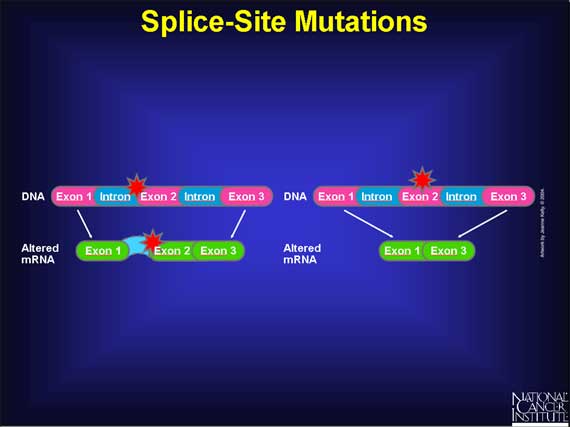|
Splice-site mutations occur within genes in the noncoding regions (introns) just next to the coding regions (exons). They can have profound effects on the resulting protein, which may lead to disease. Before mRNA leaves the nucleus, the introns are removed and the exons are joined together. This process is called splicing. Splicing is controlled by specific intron sequences, called splice-donor and splice-acceptor sequences, which flank the exons. Mutations in these sequences may lead to retention of large segments of intronic DNA by the mRNA, or to entire exons being spliced out of the mRNA. These changes could result in production of a nonfunctional protein.

< Previous | Index | Next Slide > |